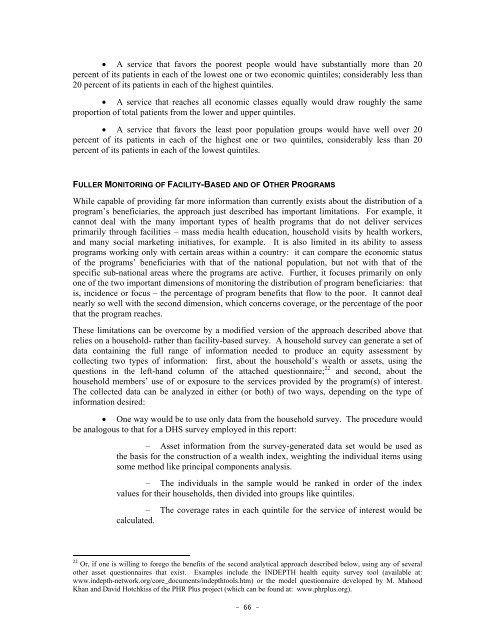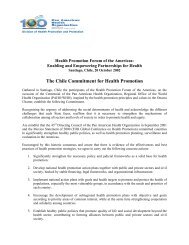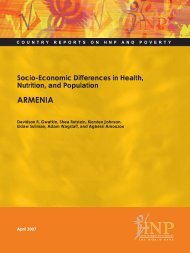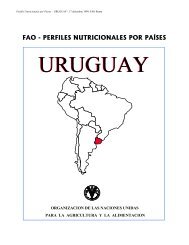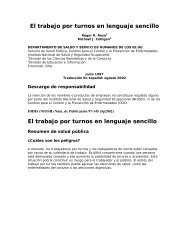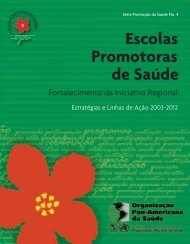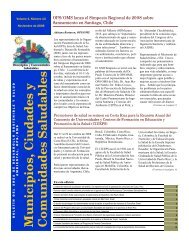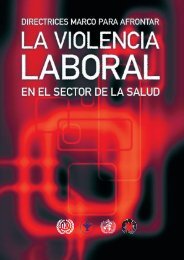Eritrea 1995. - BVSDE
Eritrea 1995. - BVSDE
Eritrea 1995. - BVSDE
- No tags were found...
You also want an ePaper? Increase the reach of your titles
YUMPU automatically turns print PDFs into web optimized ePapers that Google loves.
• A service that favors the poorest people would have substantially more than 20percent of its patients in each of the lowest one or two economic quintiles; considerably less than20 percent of its patients in each of the highest quintiles.• A service that reaches all economic classes equally would draw roughly the sameproportion of total patients from the lower and upper quintiles.• A service that favors the least poor population groups would have well over 20percent of its patients in each of the highest one or two quintiles, considerably less than 20percent of its patients in each of the lowest quintiles.FULLER MONITORING OF FACILITY-BASED AND OF OTHER PROGRAMSWhile capable of providing far more information than currently exists about the distribution of aprogram’s beneficiaries, the approach just described has important limitations. For example, itcannot deal with the many important types of health programs that do not deliver servicesprimarily through facilities – mass media health education, household visits by health workers,and many social marketing initiatives, for example. It is also limited in its ability to assessprograms working only with certain areas within a country: it can compare the economic statusof the programs’ beneficiaries with that of the national population, but not with that of thespecific sub-national areas where the programs are active. Further, it focuses primarily on onlyone of the two important dimensions of monitoring the distribution of program beneficiaries: thatis, incidence or focus – the percentage of program benefits that flow to the poor. It cannot dealnearly so well with the second dimension, which concerns coverage, or the percentage of the poorthat the program reaches.These limitations can be overcome by a modified version of the approach described above thatrelies on a household- rather than facility-based survey. A household survey can generate a set ofdata containing the full range of information needed to produce an equity assessment bycollecting two types of information: first, about the household’s wealth or assets, using thequestions in the left-hand column of the attached questionnaire; 22 and second, about thehousehold members’ use of or exposure to the services provided by the program(s) of interest.The collected data can be analyzed in either (or both) of two ways, depending on the type ofinformation desired:• One way would be to use only data from the household survey. The procedure wouldbe analogous to that for a DHS survey employed in this report:– Asset information from the survey-generated data set would be used asthe basis for the construction of a wealth index, weighting the individual items usingsome method like principal components analysis.– The individuals in the sample would be ranked in order of the indexvalues for their households, then divided into groups like quintiles.– The coverage rates in each quintile for the service of interest would becalculated.22 Or, if one is willing to forego the benefits of the second analytical approach described below, using any of severalother asset questionnaires that exist. Examples include the INDEPTH health equity survey tool (available at:www.indepth-network.org/core_documents/indepthtools.htm) or the model questionnaire developed by M. MahoodKhan and David Hotchkiss of the PHR Plus project (which can be found at: www.phrplus.org).- 66 -


